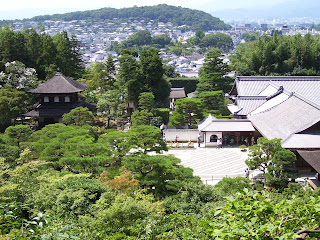Wednesday, August 29, 2007
Tuesday, August 28, 2007
Museum of Oriental Ceramics




 This museum boasts the world's finest collection of Korean and Chinese ceramics. There are also many bitter Koreans who claim that these pieces were stolen from Korea during the Japanese occupation (WWII). This is probably true, but of course none of that history is mentioned at the museum. Instead, the museum literature praises Mr. Ataka, the main donor/connoisseur.
This museum boasts the world's finest collection of Korean and Chinese ceramics. There are also many bitter Koreans who claim that these pieces were stolen from Korea during the Japanese occupation (WWII). This is probably true, but of course none of that history is mentioned at the museum. Instead, the museum literature praises Mr. Ataka, the main donor/connoisseur.
Osaka-jo
Monday, August 27, 2007
Osaka, here we come



The next day we took the rapid transit train to Osaka. I spent to afternoon getting my Korean work visa application in, and then we visited 'The Floating Garden Observatory' in the evening. Although our photos didn't really turn out, the Umeda sky building offered us a fantastic view of the city lights, as well as a fun glass-escalator ride.
Sunday, August 26, 2007
Eikan-do


This stairwell runs along the contours of the mountain slope, and is called 'Garyuro' because it resembles the form of a sleeping dragon (garyu).

This temple was founded in 855 by the priest Shinsho, but the name was changed in the 11th century to honour a widely respected priest named Eikan. The grounds were beautiful, with peaceful water gardens, impressive buildings, and beautiful artwork (of which, because it is a religious facility, photos are 'forbidden.' I couldn't help but compare the strict rules about photography here to the lax ones in western Europe where tourists snap away in cathedrals, the Louvre, and even the Sistine chapel).
Ginkakuji Temple





Ginkakuji Temple is a Zen temple, established in 1482 by Ashikaga Yoshimasa. As we walked along the paths, we saw some of the most beautiful scenes in all of our five days in Japan. There were carefully maintained rock gardens, sand sculptures, traditional buildings, paintings and waterfalls. The view from the observatory captured the contrast between the temple grounds and the modern vista of Kyoto city.
Mount Diamondji


 The garden is set at the base of Mt Diamondji. While we were wandering through the garden, an old gardener explained (by drawing on the ground with a stick, and by gesturing at the mountain in front of us, and speaking to us in Japanese that we didn't understand) that the mountain is called Diamond Mountain because the lines on the rockface look like this symbol, which means both 'diamond' and 'man'. During an annual bonfire festival, this symbol is lit up at night. We didn't see this as the festival takes place on January 15th.
The garden is set at the base of Mt Diamondji. While we were wandering through the garden, an old gardener explained (by drawing on the ground with a stick, and by gesturing at the mountain in front of us, and speaking to us in Japanese that we didn't understand) that the mountain is called Diamond Mountain because the lines on the rockface look like this symbol, which means both 'diamond' and 'man'. During an annual bonfire festival, this symbol is lit up at night. We didn't see this as the festival takes place on January 15th.

































